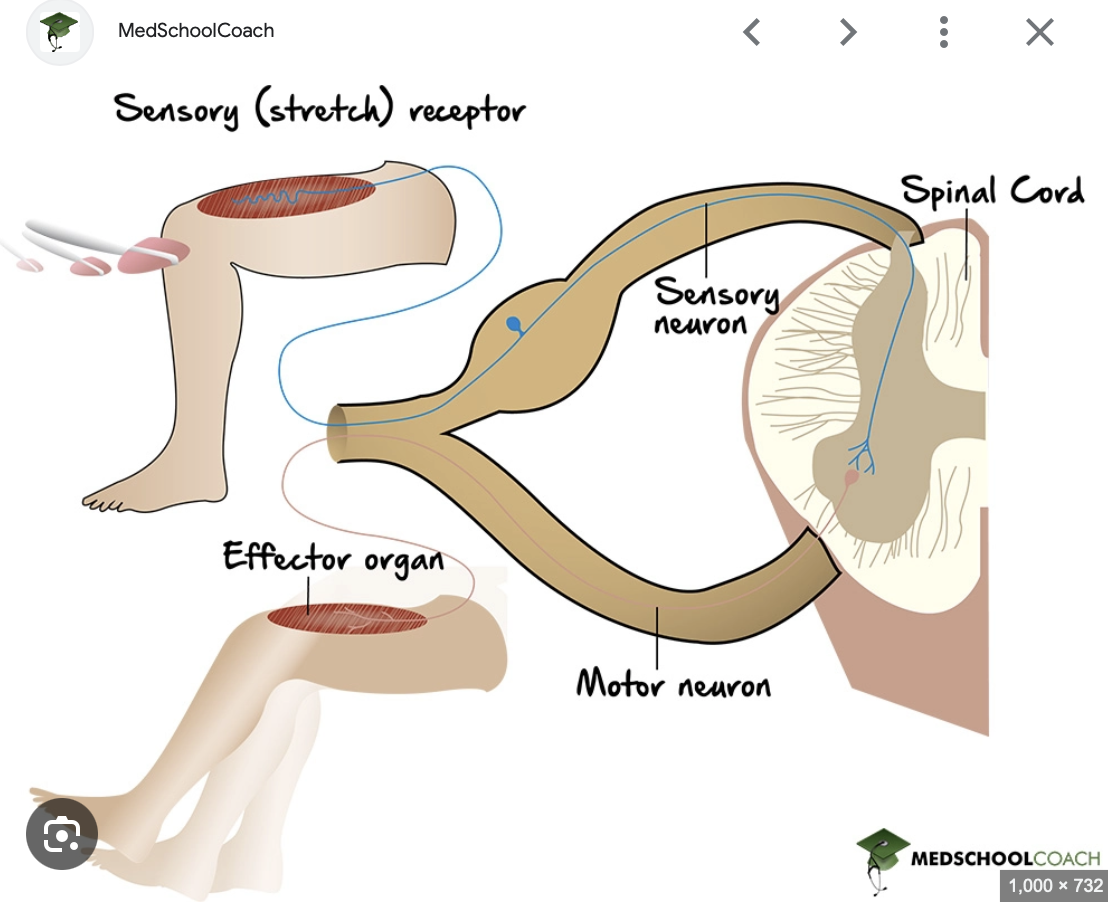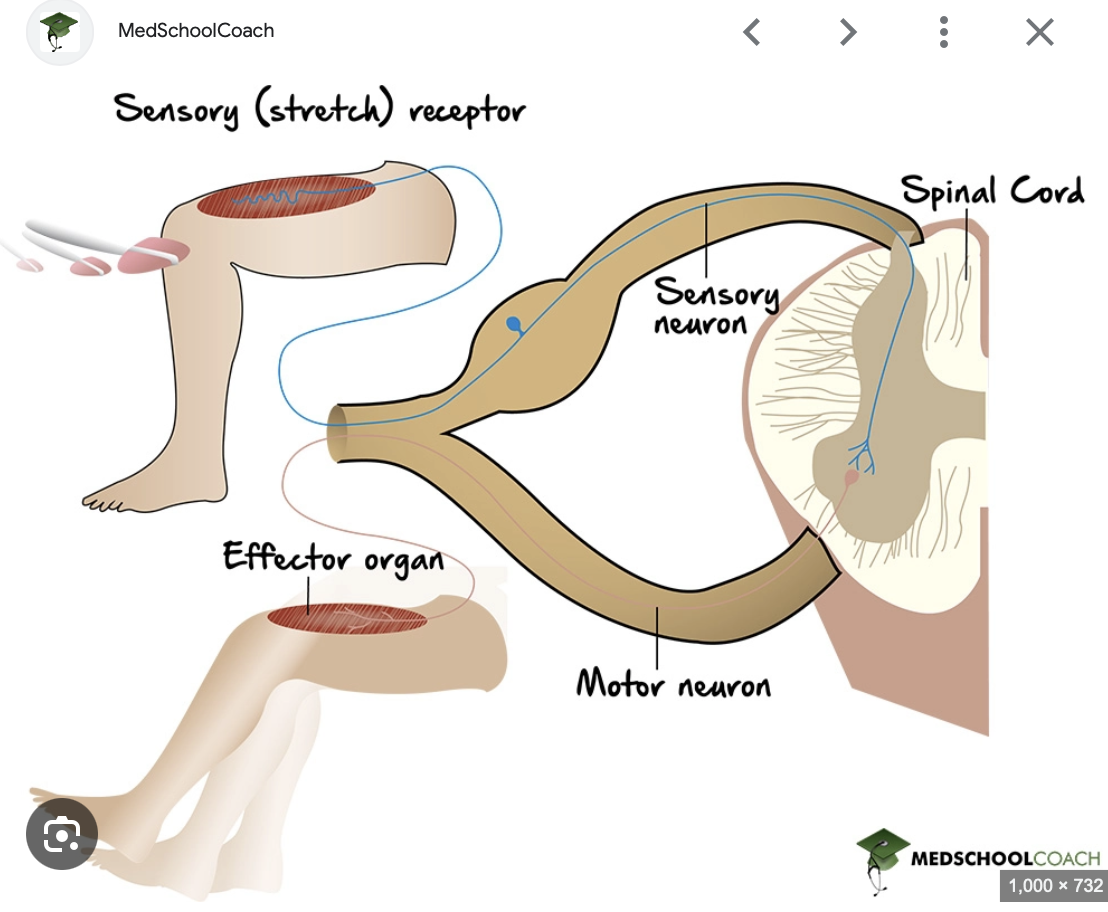Reflexes and Reaction Time BIOL 252 3/3/2025
1/13
There's no tags or description
Looks like no tags are added yet.
Name | Mastery | Learn | Test | Matching | Spaced |
|---|
No study sessions yet.
14 Terms
Jendrassik’s maneuver with clasped hands in front of the body while fingers locked pulling apart, how would we expect the knee jerk to change
Stronger Response
Subject thinking about patellar reflex, what would you expect to happen?
Weaker response
subject performing math during knee test, what would you expect?
Stronger response
What are the properties of a reflex?
Rapid, stereotypical, and involuntary
First part of a reflex arc?
Sensory Receptor
Second part of reflex arc?
afferent neuron
Third part of reflex arc?
CNS (Interneuron)
Fourth part of reflex arc?
Efferent neuron
Fifth part of reflex arc?
Effector organ

Patellar reflex arc know diagram

What is the receptor for the stretch reflex?
Muscle Spindles
Referring to the Jendrassik’s maneuver, why does it produce a stronger response?
More activated motor pathways makes others more likely to respond
Why are reflexes examined in the first place?
to ensure function of nervous system

What physiological processes occur between stimuli presentation and a response?
Visual sensory input gets sent along afferent neurons to the CNS and then to the cerebral cortex, an efferent neuron contracts the muscles of our fingers
